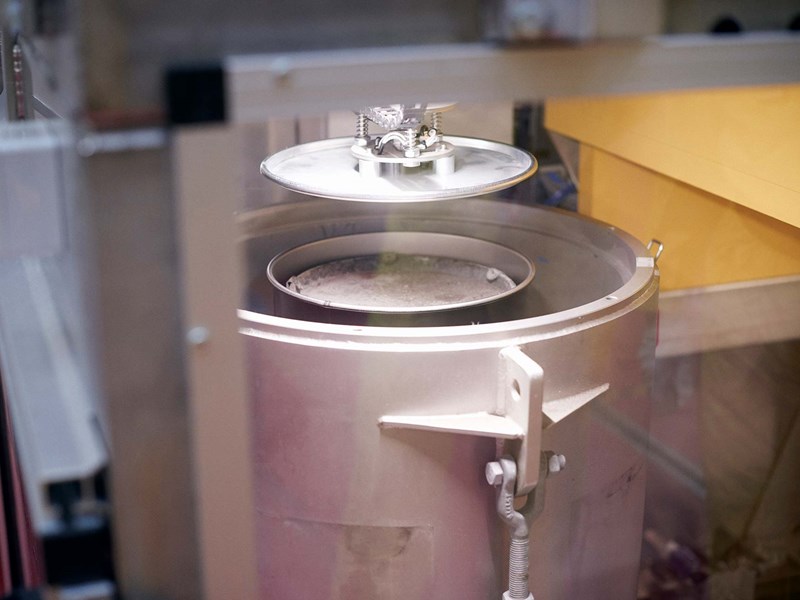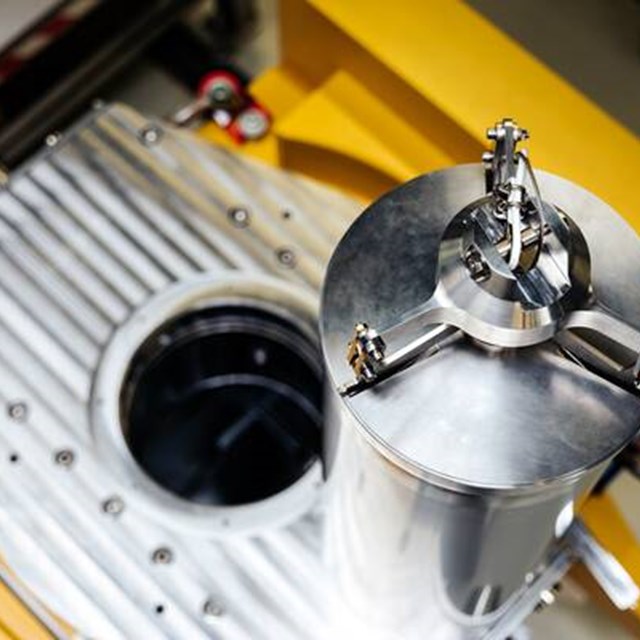Radioactive waste
Clearing radioactive waste
Where there is work and production, there is waste. The same applies to working with radioactivity. A nuclear power plant, a hospital, an oil platform, research institutes: they all produce waste which is radioactive. Sometimes a lot, sometimes not so much. From gloves and syringes from the hospital to spent nuclear fuel rods from a nuclear power plant during the production of electricity. Radioactive waste is also produced when demolishing nuclear power plants and laboratories which work with radioactivity, like hospitals. Because concrete can also become radioactive due to the radiation. NRG develops techniques to:
- accurately measure the radioactivity and composition of the waste,
- pack waste safely and efficiently so that the radioactivity does not get into the environment.

Separation of radioactive waste brings benefits
Radioactive waste in the Netherlands is collected and stored by one company: COVRA, the Central Organisation for Radioactive Waste in Vlissingen. Before the waste can be stored, it must be packed properly and safely. For example, by mixing the waste with concrete and then put in special steel vessels.
Just as with non-radioactive waste, storage costs money. The more waste and the more radioactive it is, the more storage costs. It is therefore important to separate the radioactive waste from the non-radioactive waste as well as possible: that saves money. NRG has developed a method which can calculate which parts of a laboratory or nuclear power plant being demolished are the most or least radioactive. This enables you to calculate the costs in advance. With the results of the calculations, you can also make a plan to optimally separate the most radioactive waste from the rest.
Read more
Contact

Geert-Jan de Haas
Programme-manager Nuclear Research
Measuring radioactivity: a lot or a little
Just like with non-radioactive waste, it is important to know exactly what it contains before it can be stored. You then know what preventive measures you need to take. In many cases, we know what the waste is, for example hospital waste, and sometimes the amount of radioactivity is low, such as with a glove from a laboratory. But for some types of waste, for example from examinations, that is not always the case. Because the waste is radioactive, special structures need to be built so that a laboratory technician is well protected during the measurements.
NRG has a lot of knowledge relating to measuring radioactivity. For example, NRG has developed an advanced system whereby the waste is spread on a kind of worktop in a specially protected area. A camera is installed above the table which measures the radioactivity. By using colours, it is possible to see on the computer which parts are radioactive and which are not.

Safe waste storage
It is not possible to store various types of waste in one vessel. This might cause a chemical reaction which might cause the vessel to rust after a while or enable a gas to form which could damage it. NRG tests new materials for lining the inside of waste vessels to prevent rusting. NRG also works on developing computer models which can examine whether waste that is packed in concrete, for example, will stay in place in the future without radioactive substances being discharged into the environment
More information about radioactive waste
Want to know more about radioactive waste? Then you are at the right place at NRG. Our experts are ready to answer all your questions.
